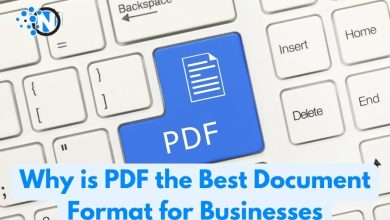10 Best Business Writing Tips for Beginners (2025)

The modern business world is data-driven. Whether you run a small business or have a little corner of the organisation, chat with a multinational company, there is a high chance that the majority of the time, you communicate with others, mostly recorded as a hard copy.
You need to avoid risking your business communication, whether you want to inspire your customers or urge your employees to keep working hard. It will help to be precise when you meet a new client in your office or a business lunch meeting.
Business writing is a fundamental skill in the workplace because it encompasses the ability to communicate clearly and concisely through documentation.
In this blog post, I have listed the top 10 business writing tips and tricks to help you write professional-looking documents or corporate messages.
Let’s start!
What is Business Writing?
Business writing is all about writing different business documents for professional communication purposes. It provides relevant data to the reader clearly, concisely, and effectively.
Business communication can be internal, keeping you in touch with those within your working environment, or external, involving clients or customers. Proficiency in business writing is essential to effective communication in the professional environment.
10 Effective Business Writing Tips for Beginners
Effective communication is the key to making your organization stand out. The following are the 10 business writing tips to put you on the right track:
- Know the Purpose – To make writing forceful
- Understanding Your Audience – For personalized writing
- Avoid Junky Jargon – To make your writing easy to read & understand
- Use Clear CTAs (Calls to Action) – To get things done properly
- Write Less but Accurately – To make writing simple and authentic
- Generate Innovative Ideas – For better communication
- Use Active Voice and Headings – To give your documents a professional look
- Use Templates – For consistency in writing
- Be Persuasive and Confident – For confident writing
- Practice and Keep Improving – To stay ahead the curve

1- Know the Purpose
Ensure to have a meaningful purpose up front. Most individuals find it difficult in business writing because they think it is child’s play. One of the most common mistakes in writing is deferring the message before concluding. Knowing the purpose coordinates the report and fosters its tone, structure, and flow.
- You should understand what your business goal is, and
- You should have a plan to achieve that goal. Sometimes you give a brief intro of your business but also influence and convince them to invest in your industry.
- Being direct about your objective will benefit you in formulating critical messages that accomplish it. Save your recipient time and sharpen your explanation before writing in detail.
Before starting a business report, memo, or email, an entrepreneur should clear two fundamental questions:
- Who is your audience?
- What are you about to communicate using business writing?
2- Understanding Your Audience
The first thing when you are starting business writing you need to have a clear vision. The next thing that comes into your mind is your target audience.
An old saying is that a message focused on everybody does not attract anybody. It will help if you target a particular marketplace. That is the only way you can pursue your users impactfully. The ideal question raised about your business is what you are offering. Will the audience like your subject or not?
Realizing your users makes responding to everybody’s most addressed question simple: “How might this benefit me?”. The individuals can be persuaded if you tell them this is the idea that can make your particular way of life more manageable.
3- Avoid Junky Jargon
Each field has its acronyms and junky terms. They are helpful shorthand when each customer knows the terminology. Yet, if you are writing for individuals outside your area, which will frequently include your clients. Just avoid slangs; otherwise, there will be a huge misunderstanding.
If you need to avoid jargon, make sense of it. There is an explanation that jargon sometimes does not mean anything. When proofreading your writing, look for signs and buzzwords to change before delivering the copy to your client.
You can toss in too much jargon, and your reader will expect you to be on autopilot or even worse. Jargon adds only worth for clarity and conciseness that always remains to be updated.
4- Use Clear CTAs (Calls to Action)
A CTA urges a reader to make a quick move after reading the business writing. You can hold the content of educational documents better. Most businesses are intended to accomplish some purpose, so you need to utilize a call to action to improve your business.
- CTA enables you to decide whether you delivered a compelling business document or if there is still a need for improvement.
- Please do not take a chance to leave it to the users to conclude what to do with the information they are given. Some will find it intriguing.
- However, most will get it wrong that they have a mess on their hand.
5- Write Less but Accurately
Written information is essential for the effective operation of an organization. People are likely to read less if they are encouraged to make valid points. You will frequently find them skimming documents for essential data. You can achieve proficiency in business through everyday practice. It is beneficial to utilize simplified words because they clearly understand your writing.
It is recommended that you use a thesaurus to assist you with tracking down simplified words to technical terms or consult with your fellow employees to make it more efficient.
6- Generate Innovative Ideas
It is beneficial to have innovative ideas before writing. It is undoubtedly helpful to comprehend the thoughts to include in the business document.
A structural model of your business is necessary to be convincing of the idea. Depending on your vision, the company will achieve a global reach or be limited to local purposes. Always start with the information you have and motivate yourself to upgrade it over time. If you are confident, then no one can come your way.
Creating an ideas list helps you distinguish subjects within the document. That is the best thing to do for effective business communication. Then you can further be involved in developing ideas into segments depending on you.
7- Use Active Voice and Headings
In the active voice, the subject acts on the sentence. However, it is a quick way to clarify writing. Sentences in active voice are frequently more limited and exact. They also provide transparency to the report and avoid monotony. If the given verdict is in active voice, it may help you control the writing and expand persuasive writing authority to the reader.
Section writing into effectively organizable headings. Headers and sub-headers make scanning and navigating the document more accessible for the reader. Titles can include the main section of the subject. On the other hand, subheadings can break the content into segments. It is the most digestible section for organizations and clarifications.
8- Use Templates
There is a process for all businesses to communicate effectively. Creating and using business document templates is a good idea for improving business writing and communication.
You need to have a legal document of the deal, but some businesses prefer communication documents. It will be up to you to refrain from making it viral and circulating anything. You can use templates to schedule a meeting or negotiate a business deal. For this purpose, you need to make templates of the emails or documents your organization prefers and save them for later use.
9- Be Persuasive and Confident
Whether you’re trying to close a transaction, get clearance for a project, or motivate action inside an organization, business writing is often a persuasive tool. Use powerful, captivating language that exudes conviction and clarity while writing persuasively. In order to increase the credibility and impact of your message, support your arguments with specific facts, thorough examples, and sound reasoning.
Avoid hesitant phrases like “I think” or “maybe,” as they can give the impression that your arguments are unsure or weak. Instead, use language that demonstrates your confidence and is straightforward and assertive. Instead of stating, “This might be a good solution,” for instance, add, “This is the best solution based on our analysis.” Your audience is more likely to believe and agree with your point of view when you write clearly and authoritatively, as this demonstrates your knowledge and leadership.
10- Practice and Keep Improving
There might be a question in your mind that, what is the purpose of improving your business writing?
Business writing is a skill that develops with ongoing learning and development; it is not only about following the rules. You get more self-assured and proficient the more you practice. Develop the habit of reading business documents, emails, and reports produced by professionals to see different writing approaches and styles. Examine the communication structures of seasoned pros and use their finest techniques into your own writing.
You can further enhance your skills by enrolling in business communication training programs, attending workshops, and taking writing classes. These resources offer organized learning experiences where you can get professional advice and helpful criticism. Finding development opportunities can also be aided by reviewing and critiquing work with mentors, coworkers, or professional networks.
Final Words
Business writing has much potential to give a boost to your business operations. In many experiences, our team has witnessed increased revenue with attractive business writing.
Only accurate or essential data influences the motivation behind the document. You should also perform multiple tests for your strategies. This will help you choose the best one that aligns with your goals. So, while paying attention to these business writing tips for professionals and beginners, you can build an effective business writing strategy.




